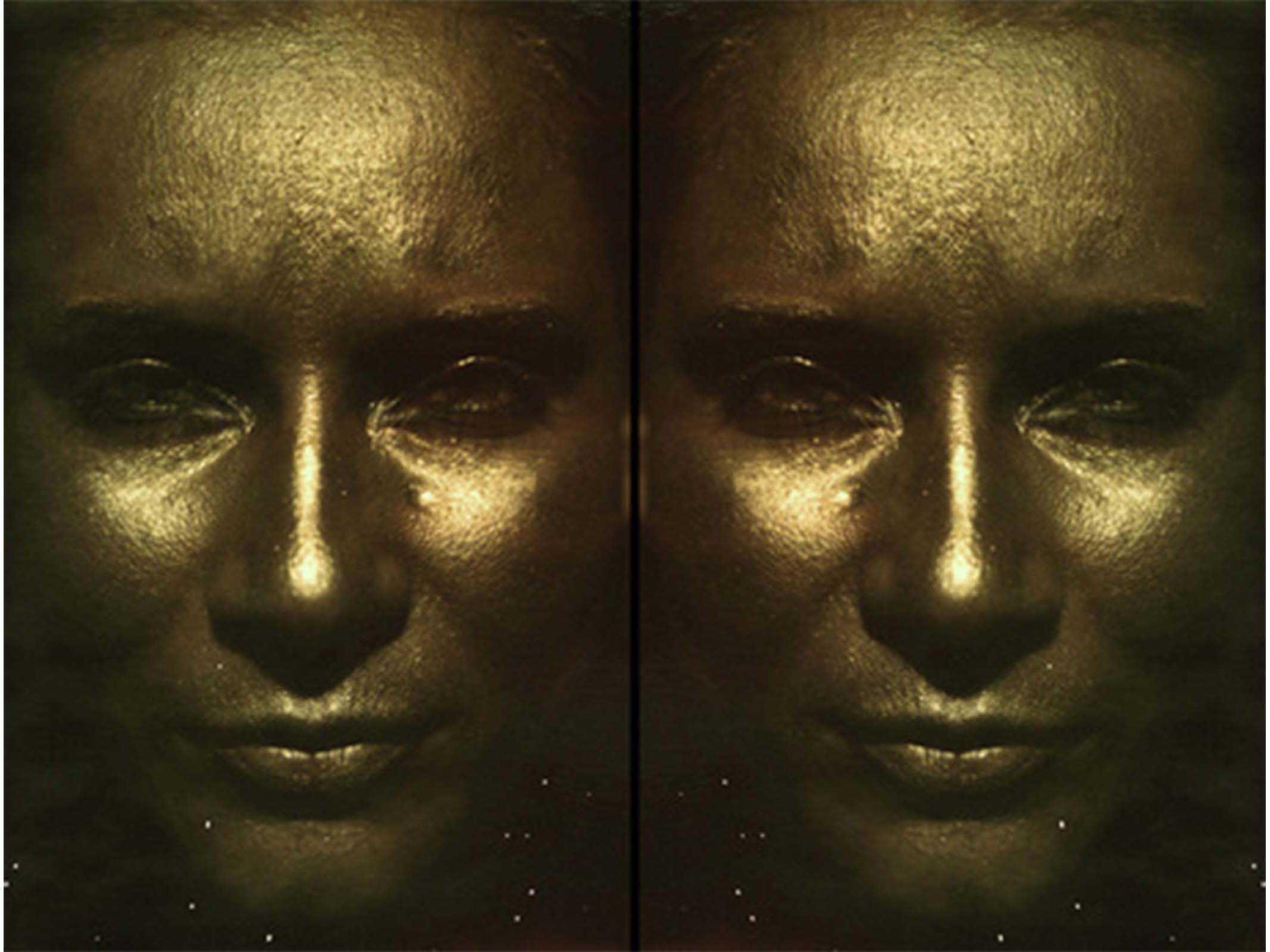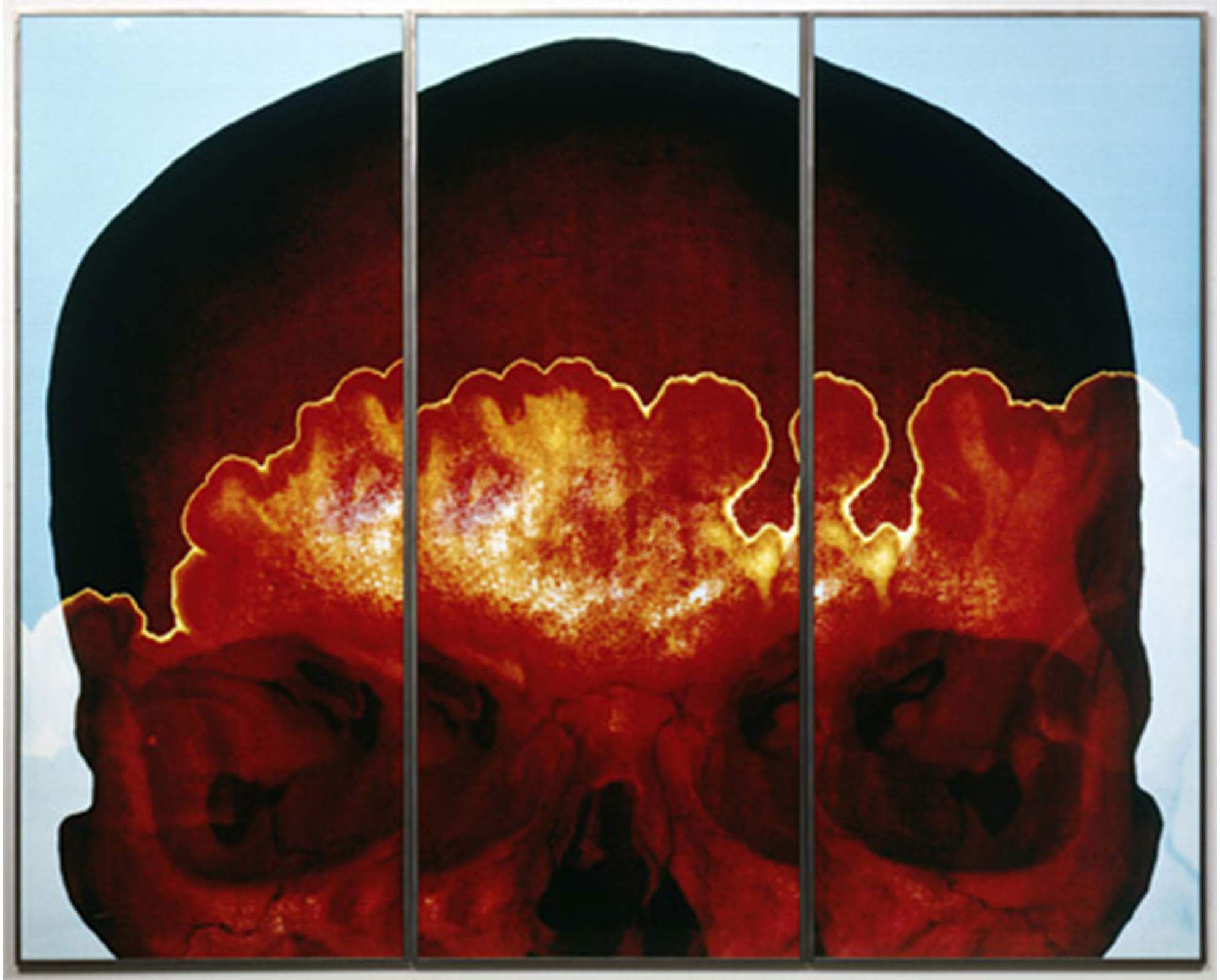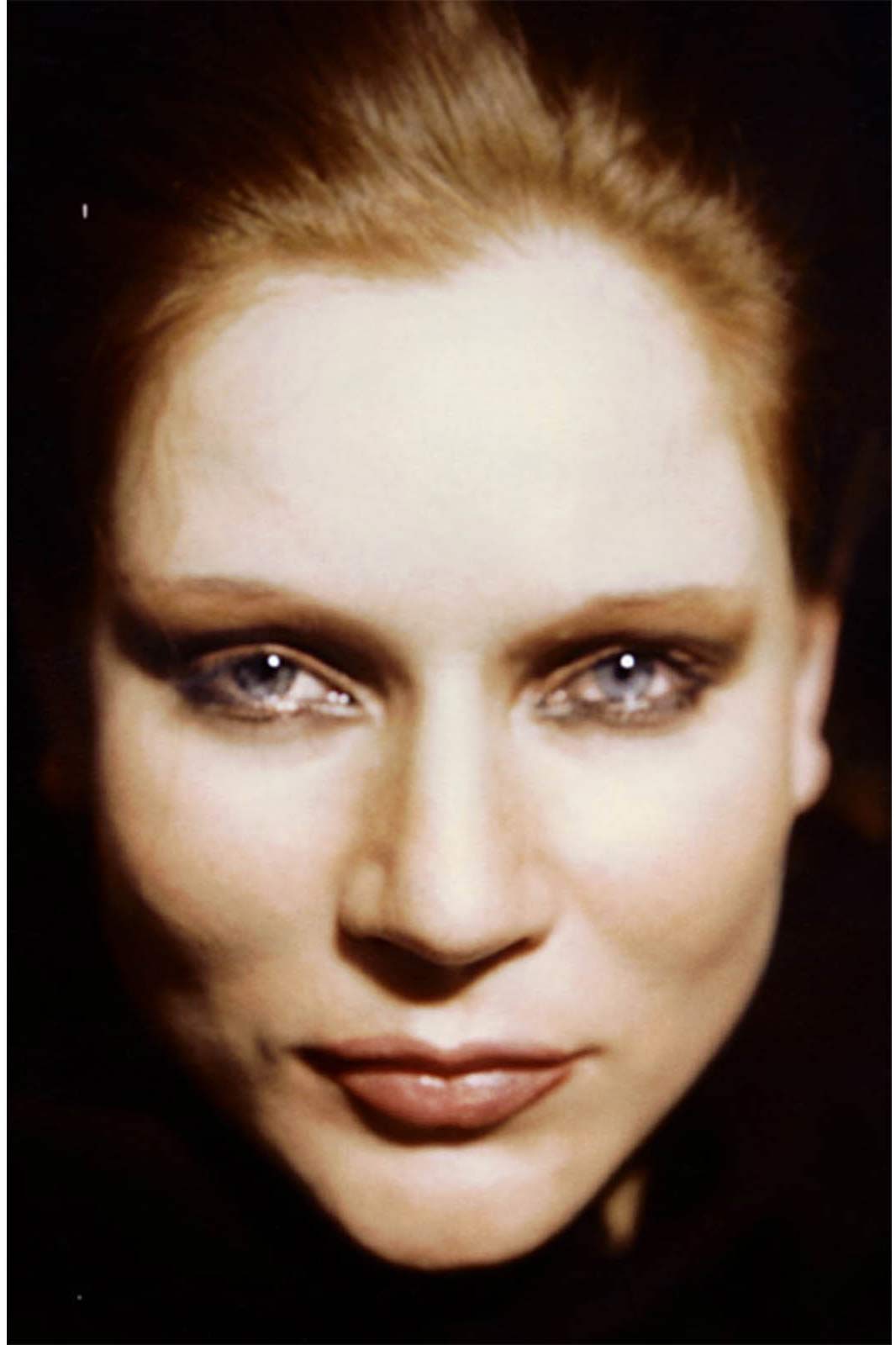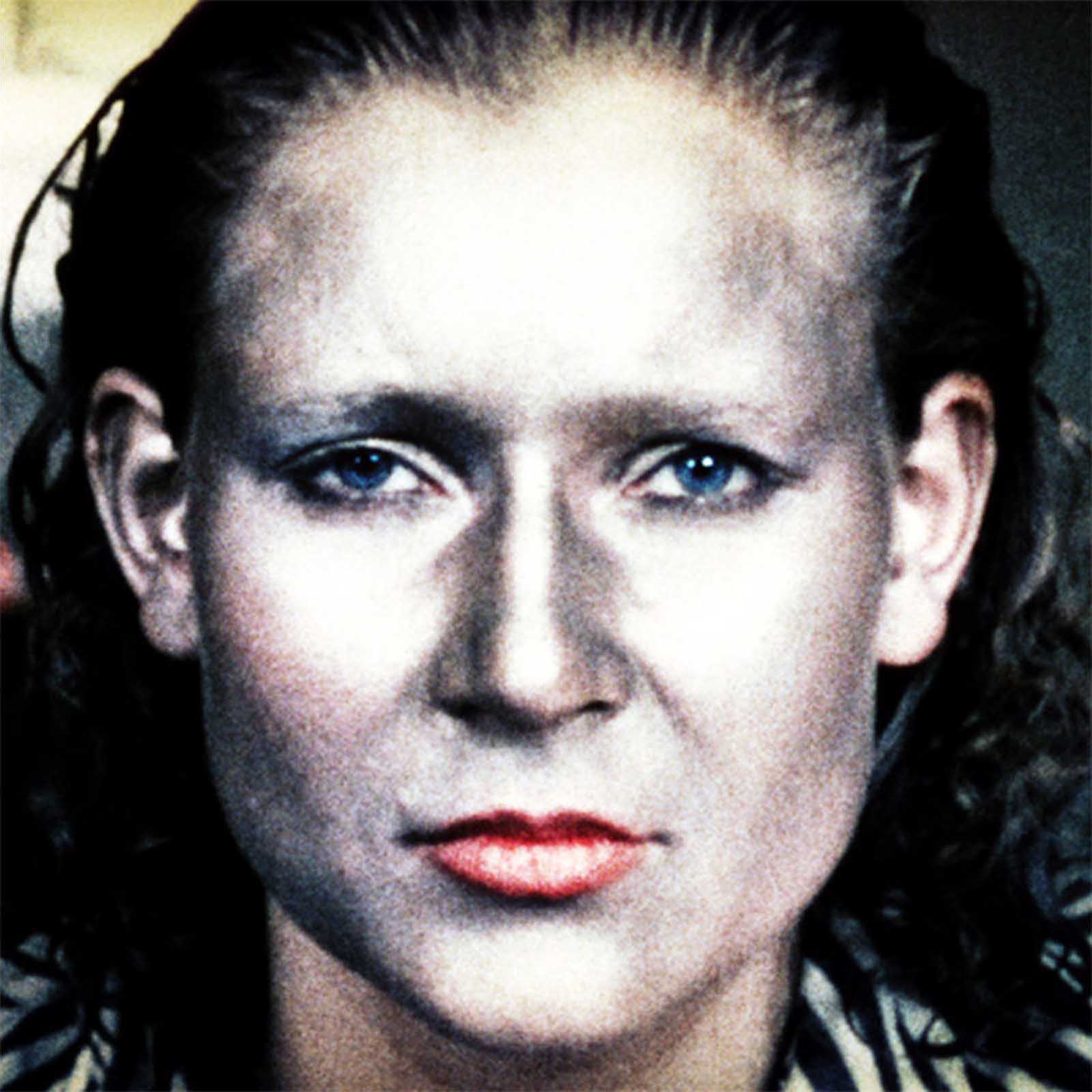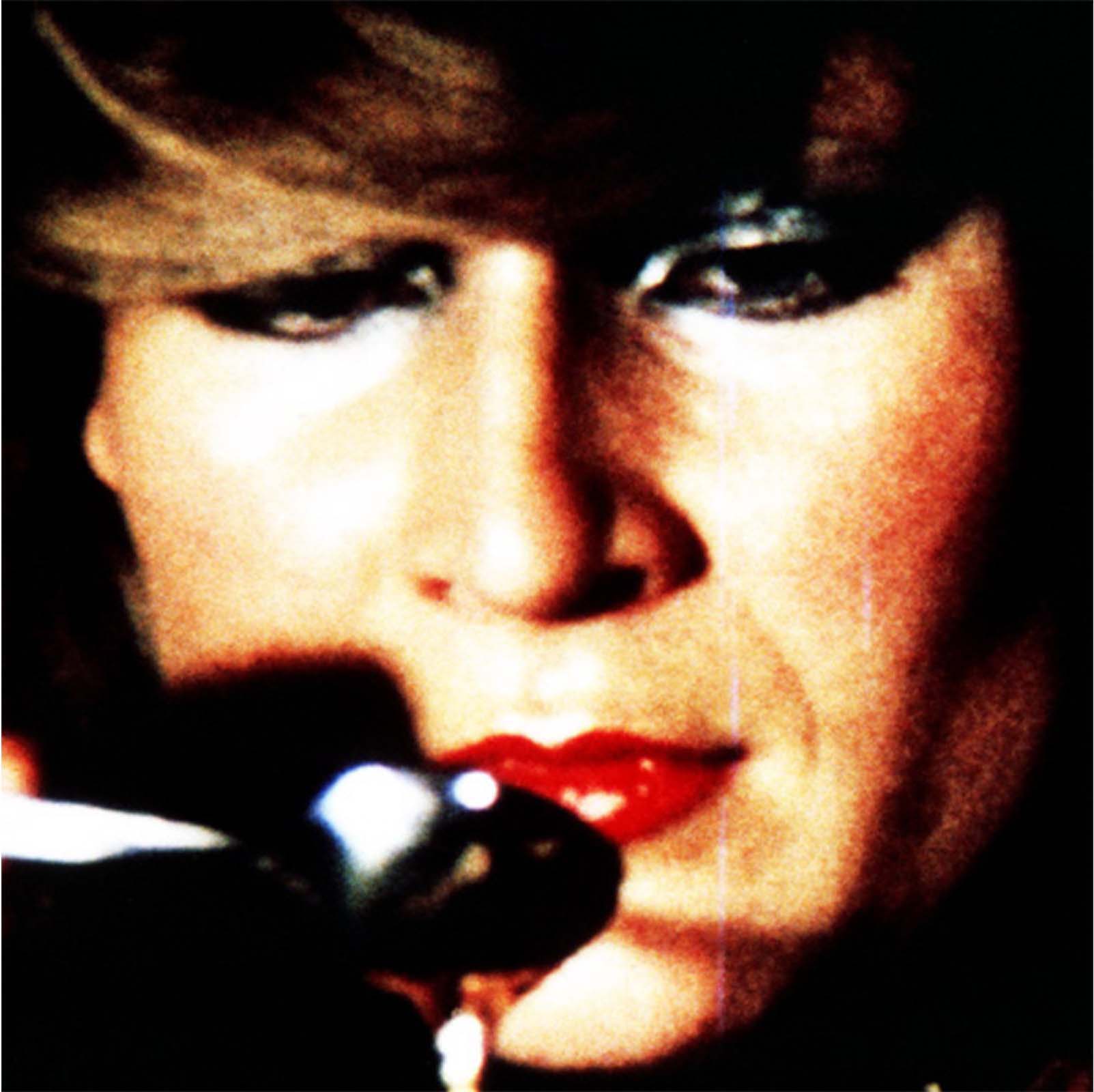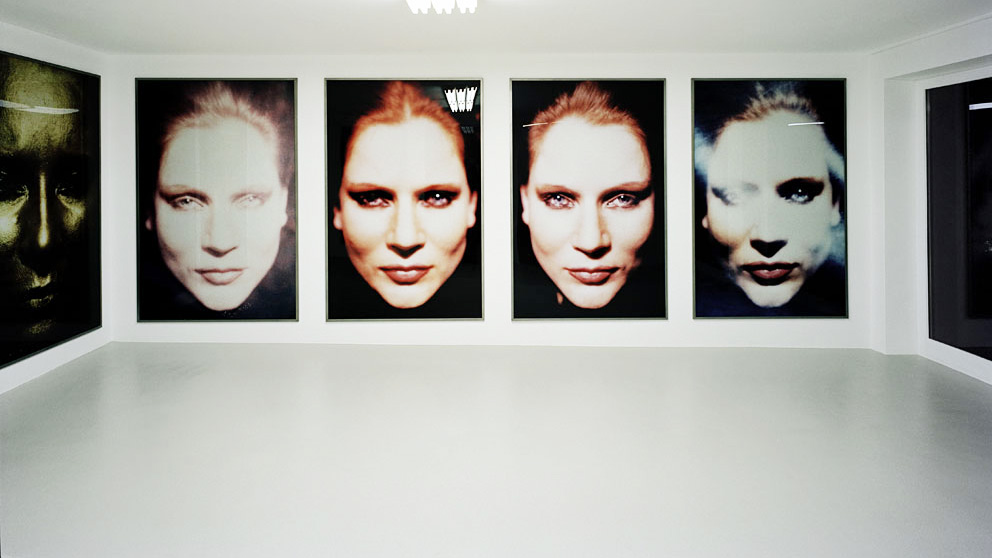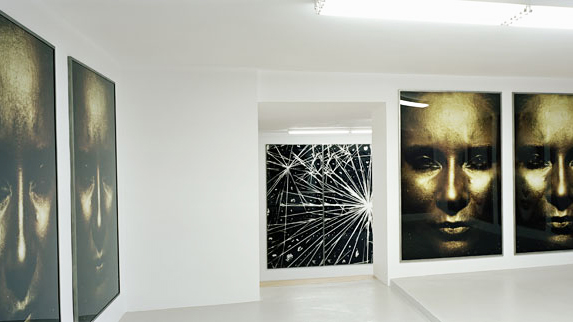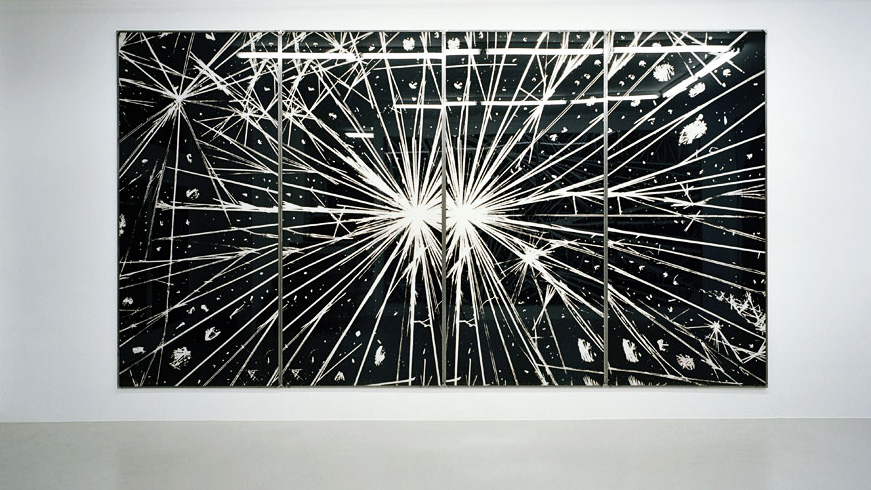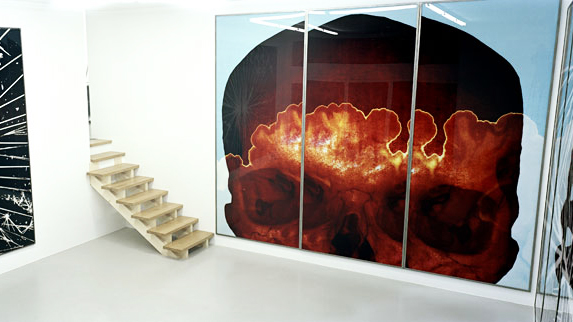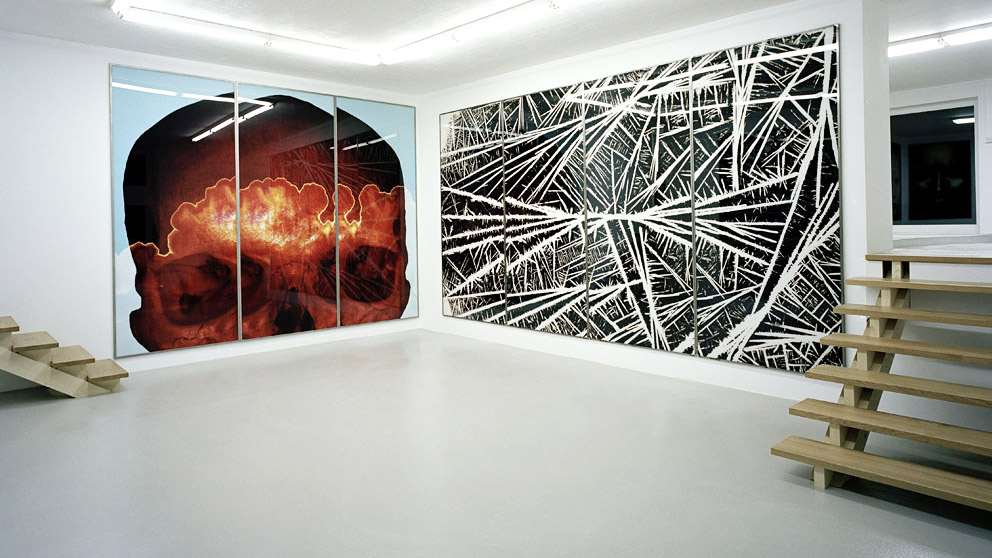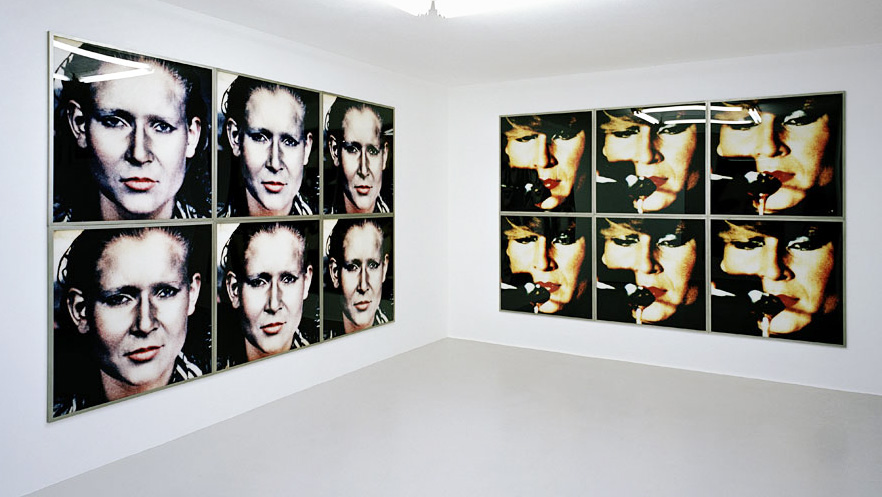Encode III
-
![]() Katharina Sieverding
Katharina Sieverding
III/192/12 A/B,1973
C-Print, Acrylic
190 x 250 cm -
![]() Katharina Sieverding
Katharina Sieverding
Steigbild X/97,1997
D-A Process, Acrylic
125 x 300 cm -
![]() Katharina Sieverding
Katharina Sieverding
VII/196/7,1973
C-Print, Acrylic
190 x 125 cm -
![]() Katharina Sieverding
Katharina Sieverding
Life-Death, VI/01-06,1969
C-Print, Acrylic
100 x 100 cm -
![]() Katharina Sieverding
Katharina Sieverding
Life-Death, VII/05-06,1969
C-Print, Acrylic
100 x 100 cm
Patricia Low Contemporary is proud to present Katharina Sieverding for the first time in a Swiss gallery since her exhibition at Tony Gerber’s in the 70’s. With almost four decades of artistic practice encompassing photography, film and installation, Katharina Sieverding (b.1944 Prague) has influenced two generations of women artists and photographers. ENCODE III 2005 traces Sieverding’s career, from her pioneering film-based works in 1969 (Life-Death), to the monumental photographic tableau (Steigbild X) presented at the German Pavillion during the 1997 Venice Biennale. Both works are witnesses to the politics of those times.
As a student of Joseph Beuys in the 60’s, Sieverding immediately embraced photography and film to document the political turmoil which had by then reached Düsseldorf. The exhibition features two sequences from the 1969 film Life-Death (Room 3).
In the first one, Sieverding stares at her own reflection in a tablespoon of honey as it spills onto her bare legs. Here, the artist asserts herself as an extreme sexual and powerful woman, with the sexual liberation movement and students upheaval as a backdrop. In the second, she stares at the camera, her face painted gold, death mask like, defying the polarity of our existence. Each sequence consists of six one by one meter C-prints. These early works can be seen as an homage to Beuys who had smeared his face in gold leaf and honey four years earlier in his performance How to Explain Pictures to a Dead Hare.
Die Sonne um Mitternacht schauen (To Behold the Sun at Midnight), 1973 (Room 1), explores the questions of identity and transformation. By magnifying her face into a close-up and making heavy use of make up, Sieverding seeks to de-individualize her visage into a mask. This mask serves as a mirror, a surface for projecting analyses and reflecting about the ego. It has been said that these portraits are like modern-day Cassandras: by reflecting the problems of today, they foresee the future and represent a ‘counter-image to amnesia’, not to allow the past to be forgotten.
This series refers to the Roman practice of looking at the sun for artistic inspiration. Actors in Roman times also wore masks, offering the public two faces, one alive and one dead. Sieverding has produced these works over seven nights, one night painting her face gold. The use of gold is ambivalent as it makes the surface of her face more sensitive to light while formally recalling King Tut’s death mask. In these gold portraits, the images are reversed, furthering the ideas of duality and mirroring. The gender question is addressed here as well, as the photographs were taken lying down (submission, death), in counter-model to the erect male stance (phallus, life).
The Kristallisation series (Room 2) consists of blown up images of microscopic photographs of capillary blood crystallized through the addition of copper chloride. These crystallization studies are used for diagnostic purposes. In Sieverding’s hands, these images become beautiful abstract works which can be seen as portraits, quite literally, or “energetic tableaux”. This series continues to focus on the concepts of transformation and metamorphosis that have been key aspects of Sieverding’s work, but now on a scientific level.
Commenting on the development of these images, the artist has stated:
‘The crystal imagery is a development of a very personal experience. The crystallization images go back to a situation where I needed blood transfusions in order to survive. During the process I came across different methods for establishing blood groups. Because of all the transfusions I had to wait for some time until my blood could reflect my organism. That was my introduction to these matters…. I see the work as anti-artistic reflections of organic and un-organic signature andradiation. One works on the assumption that these are formative forces at work in human beings, affecting psychologically mental, or spiritual qualities, every thing that makes a person over and above the mere quantitative…. I always use size as a way of revealing the idea that lies behind the work –microcosm and macrocosm—.’
As the daughter of a radiologist, Sieverding’s first experience with images and photography goes back to her father’s medical practice. She used to be astonished by her father’s interpretations of X-rays and all which they revealed to him. X-rays are yet another form of portrait, they are portraits of the invisible, of what’s inside. Steigbild X (Room 2) is a complex image experimenting with digital and analog processes. The image of a human skull, complete with eyes and nose sockets, faces the viewer and is layered with clouds of acid or hydroxides rising against litmus papers.
The Steigbild cycle (capillary dynamolysis) 1997, goes beyond the empirical and also includes images of soldiers in Kosovo and Nablus. At the time of the human genome research program and in the wake of globalization, it raised essential questions about biopower and biopolitics. The Steigbild cycle was conceived for and first shown at the German Pavillion of the 1997 Venice Biennale.
Katharina Sieverding was born in Prague in 1944 and studied sculpture at the Staatliche Kunstakademie Dusseldorf (1967-72) with Joseph Beuys. Her solo exhibitions include: Kunst-Werke, Berlin (2005); PS1/MOMA, New York (2004); Deutsche Guggenheim, Berlin (1998); Stedelijk Museum, Amsterdam (1998); Kunstsammlung NRW, Düsseldorf (1997/8); German Pavilion, Biennale di Venezia (1997); KW Institute for Contemporary Art, Berlin (1993); Neue Nationalgalerie, Berlin (1992); Memory and Vision, Art Space, San Francisco (1988); Städlische Kunsthalle, Düsseldorf (1980); Nicht auf der Stelle Treten, Van Abbe Museum, Eindhoven (1979); Der Palast blieb kalt und verschlossen, Galeria L’Attico, Rome (1972).
Her group exhibitions include Video Acts: Single Channel Works from the Collections of Pamela and Richard Kramlich and New Art Trust, P.S.1 Contemporary Art Center (2002); Rrose is a Rrose is a Rrose, Guggenheim Museum, New York, Warhol Museum Pittsburgh (1997); Augenhöhe – Van Abbe Museum 1936-1986, Van Abbe Museum, Eindhoven (1987); Photography in Contemporary German Art: 1960 to the Present, Walker Art Center, Minneapolis, Dallas Museum of Art, Modern Art Museum Forth Worth (1992) and Guggenheim Museum Soho, New York, The Lannan Foundation, Los Angeles (1993); Documenta VII, Museum Fridericianum, Kassel (1982); Documenta VI, Museum Fridericianum, Kassel (1977); Documenta V, Museum Fridericianum, Kassel (1972).
Katharina Sieverding lives and works in Berlin and Dusseldorf. She is a professor at the University of the Arts Berlin. In 2004, she joined Cy Twombly, Max Ernst, Gerhard Richter and Cindy Sherman as a recipient of Germany’s most prestigious art prize, the Goslarer Kaiserring.
